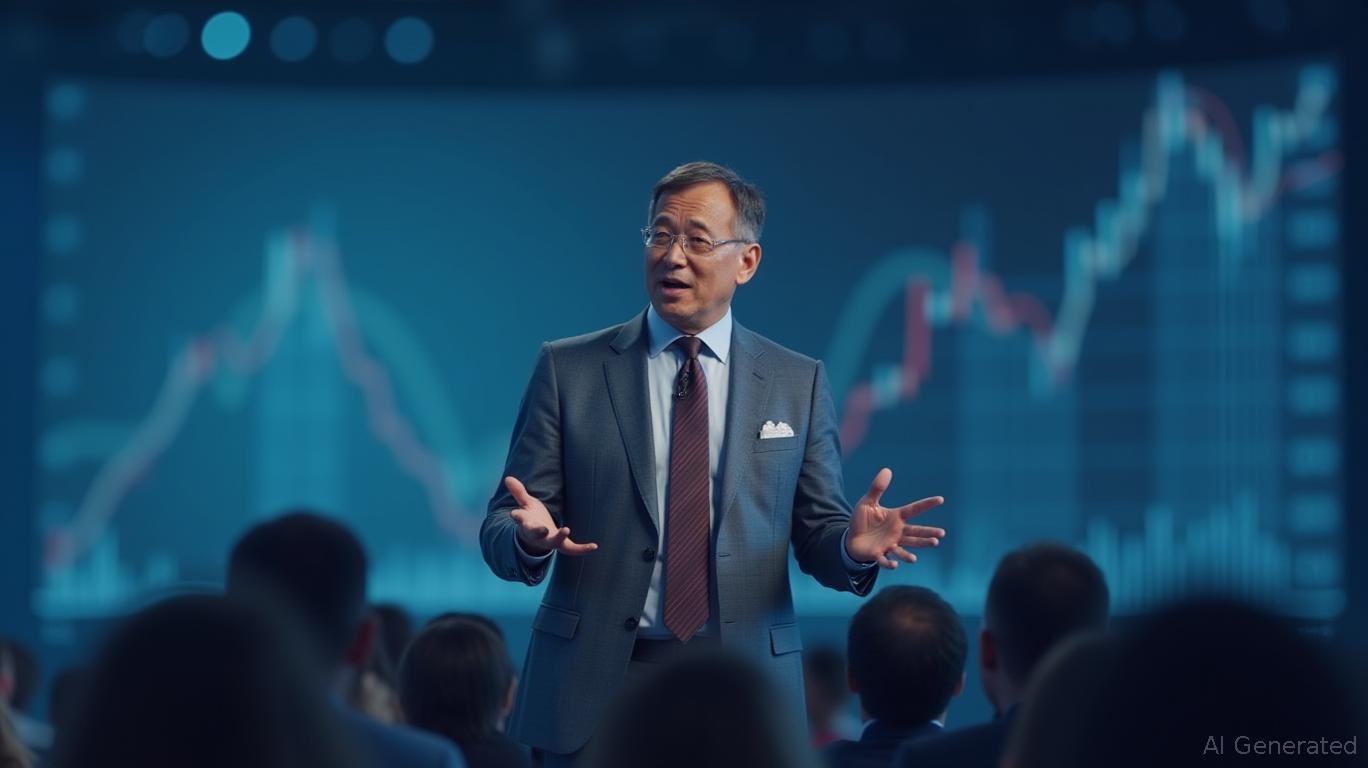"Service-Driven Storm: Why Inflation's Next Peak Defies Traditional Fixes"
- U.S. core PCE inflation is projected to peak at 2.9% in July 2025, driven by supply chain strains, rising service-sector costs, and wage inflation. - The Federal Reserve signals potential rate hikes in Q3 2025 but remains cautious to avoid over-tightening amid persistent demand and geopolitical energy shocks. - Services-driven inflation complicates policy responses, with wage growth and structural economic shifts sustaining pressure despite goods-sector moderation. - Emerging markets face heightened fina
The U.S. economy’s core personal consumption expenditures (PCE) inflation is expected to reach a peak of 2.9% in July 2025, according to the latest economic projections compiled by the Bureau of Economic Analysis and private sector forecasters. This figure represents a significant increase from the current core PCE rate of approximately 2.1%, reflecting the persistent pressures from supply chain constraints, rising service-sector costs, and continued wage inflation across key industries [1].
Analysts attribute the anticipated rise in core PCE inflation to multiple factors. The Federal Reserve's gradual approach to tightening monetary policy, combined with strong consumer demand, has kept inflationary pressures elevated. Service-sector prices, particularly in transportation, healthcare, and accommodation, have been key contributors. Additionally, energy prices remain near multi-year highs due to geopolitical tensions in the Middle East and reduced production in key oil-exporting regions [1].
In response to the projected inflationary surge, the Federal Open Market Committee (FOMC) has signaled a cautious stance, with policymakers indicating a potential rate increase in the third quarter of 2025. However, the central bank has also hinted at a more measured approach if inflationary pressures begin to moderate before the year's end. This conditional approach reflects the Fed's desire to avoid over-tightening, which could risk a prolonged recession [2].
The projected 2.9% core PCE rate in July 2025 would mark the highest level since the early 2022 inflation spike, though it remains below the peak of 3.4% recorded in 2022. Economists note that the composition of inflation has shifted, with a greater emphasis on services rather than goods, reflecting broader structural changes in the U.S. economy. This shift complicates monetary policy, as services inflation is less responsive to traditional demand-side interventions [3].
Market participants are closely monitoring the U.S. Treasury yield curve and employment data to gauge the Fed’s next move. The 10-year minus 2-year Treasury yield has been flattening, a potential indicator of looming economic slowdown. Meanwhile, nonfarm payrolls have shown continued strength, with average hourly earnings rising at a 3.8% annual rate, contributing to expectations of wage-driven inflation persistence [4].
The upcoming inflation peak is also expected to have international implications, particularly in emerging markets, where capital flows may slow if U.S. interest rates remain elevated. While the impact will vary by region, analysts warn that countries with high levels of dollar-denominated debt could face increased financial stress in the near term [5].
Source:

Disclaimer: The content of this article solely reflects the author's opinion and does not represent the platform in any capacity. This article is not intended to serve as a reference for making investment decisions.
You may also like
$8.8 billion outflow countdown: MSTR is becoming the abandoned child of global index funds
The final result will be revealed on January 15, 2026, and the market has already started to vote with its feet.

Deconstructing DAT: Beyond mNAV, How to Identify "Real vs. Fake HODLing"?
There is only one iron rule for investing in DAT: ignore premium bubbles and only invest in those with a genuine flywheel of continuously increasing "crypto per share."

Empowered by AI Avatars, How Does TwinX Create Immersive Interaction and a Value Closed Loop?
1. **Challenges in the Creator Economy**: Web2 content platforms suffer from issues such as opaque algorithms, non-transparent distribution, unclear commission rates, and high costs for fan migration, making it difficult for creators to control their own data and earnings. 2. **Integration of AI and Web3**: The development of AI technology, especially AI Avatar technology, combined with Web3's exploration of the creator economy, offers new solutions aimed at breaking the control of centralized platforms and reconstructing content production and value distribution. 3. **Positioning of the TwinX Platform**: TwinX is an AI-driven Web3 short video social platform that aims to reconstruct content, interaction, and value distribution through AI avatars, immersive interactions, and a decentralized value system, enabling creators to own their data and income. 4. **Core Features of TwinX**: These include AI avatar technology, which allows creators to generate a learnable, configurable, and sustainably operable "second persona", as well as a closed-loop commercialization pathway that integrates content creation, interaction, and monetization. 5. **Web3 Characteristics**: TwinX embodies the assetization and co-governance features of Web3. It utilizes blockchain to confirm and record interactive behaviors, turning user activities into traceable assets, and enables participants to engage in platform governance through tokens, thus integrating the creator economy with community governance.

Aster CEO explains in detail the vision of Aster privacy L1 chain, reshaping the decentralized trading experience
Aster is set to launch a privacy-focused Layer 1 (L1) public chain, along with detailed plans for token empowerment, global market expansion, and liquidity strategies.
